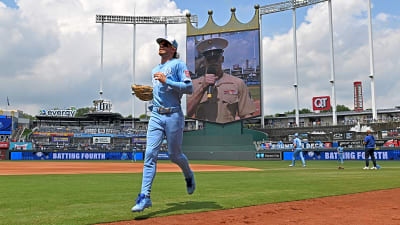By Shah Faisal
Australia clean swept The West Indies 3-0 in the recently concluded test series in the Caribbean. Though the score line 3-0 might suggest an easy walk in the park for Australia but in reality, it was a win that was won by their bowlers not their batters. Despite the sharp knife efforts of West Indies pace battery the west Indian batters always found ways to let Australia stay in the game by playing nothing cricket at all. Their batting was so disappointing that it's hard to think of the problem in it. From the outside, the entire batting setup of the team appeared to be a holistic one piece problem. However , if one tries to scrutinise with a bit of focus, they would see the pulsing problem in front of their eyes.
One of the biggest reasons behind West Indies' continued Test struggles is their fragile opening pair. Unlike dominant sides with aggressive, world-class openers who unsettle the new ball, West Indies lack that edge. Their openers neither show bite nor intent. This passivity gives opposition fast bowlers the upper hand, who then pick apart the top order and pile on pressure early. Without a strong start, the rest of the lineup constantly plays catch-up.
Over the past two years, West Indies have tried four different openers—with worrying returns:
Kraigg Brathwaite: 18 Tests, average ~19
Tagenarine Chanderpaul: 10 Tests, average 32.94 (one double-century, but mostly inconsistent)
Kirk McKenzie: 7 Tests, average ~16.9
Mikyle Louis: 10 Tests, average 18.45 (two fifties, highest score 97)
These numbers paint a bleak picture. When your openers average below 25—except one—it’s hard to see how any team can dominate. Without solid attacking starts, West Indies remain vulnerable. Until they find openers who can not only survive but also score with purpose, winning Test matches—especially away from home—will remain a distant dream.
West Indies needs players in the opening position who are fine with their natural instincts. They need dismantling openers who have a bit of temperament just to see off the good balls and play their shots without any fear. Sending less aggressive openers has failed drastically. They need to send players who are aggressive and can play shots. Getting out for 20 off 45 balls will add more pressure than getting out for 20 off 15 balls. The second case can send panic in the opposition lines and perhaps would allow you to play a 50 or 60-run innings once in a while to give your middle order a chance.
This case would have got some space if the middle-order players of West Indies had some solid players who could take the responsibility and could play long and anchored innings. But this is not the case. Of all the players in the middle order who played in the 3rd Test against Australia in the 2025 Test Series, Roston Chase has the best average of 25.86. The others fall beneath him in terms of averages. These are unreal numbers for players of a team who has a long and rich history of Test cricket.
It is true that players in West Indies tend to play the shorter format of the game and have no ambitions for Test cricket, but at least the players must develop some self-respect and those who want to play must improve their game. Otherwise, the fans and the believers of West Indies cricket will soon turn their eyes off them and would fling their team into a huge pit of cricketing austerity.
The problem is not just the technique of the players or the cricketing structure of first-class cricket. It also lies in the individual chivalry of the players, their self-esteem, and their professional growth in terms of their respect for their country and red-ball cricket. Many of these players who played in the 3rd Test have good records in white-ball cricket. Roston Chase, Brandon King, and Shai Hope are all good players who can play quality cricket and have done so on the international stages, so the element of technique or pressure facing is not what people assume as the key issue. The key issue is their image of themselves in their own eyes.
Besides this, the problems have been there for long and it ranges from financial discomfort of the board to players not choosing red-ball cricket because of the lack of focus on it and also the financial dryness of red-ball cricket in the Caribbean.
But if one has to fix its problems, he must find different ways to solve it. The management should at least prefer players who are loyal to the national side and not throw them out in main events like World Cups. We have seen it many times that West Indies brought the likes of Gayle and Pollard and Bravo back to teams just for World Cups and afterwards didn't bound them to play for their national side.
However, now that West Indies has found its bowling mojo back, it is important for them to nurse their batting at least to enable it to back the bowling efforts of their bowlers. Otherwise, their bowlers will lose the courage that has come after so many dry years.
More must-reads:
- First-round draft pick Jahdae Barron finally inks rookie deal with Broncos
- LeBron James' agent warns NBA media about his retirement
- The 'MLB Home Run Derby champions' quiz
Breaking News
Trending News
Customize Your Newsletter
 +
+
Get the latest news and rumors, customized to your favorite sports and teams. Emailed daily. Always free!








